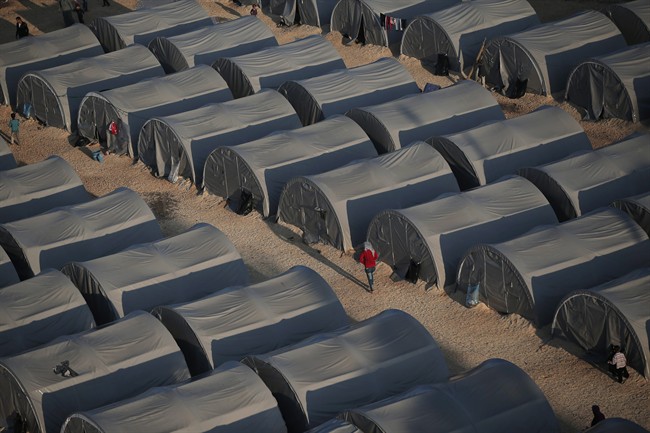ISTANBUL – More than 4 million Syrians have fled abroad since the 2011 outbreak of civil war, the largest number from any crisis in almost 25 years, the United Nations said Thursday.

A recent wave of people leaving Syria and an update of Turkish statistics confirmed the tragic milestone, according to the U.N. refugee agency, UNHCR. The agency said 7.6 million additional people have been displaced from their homes within Syria by the fighting.
The 4 million refugees are the most to flee a conflict since the Afghan civil war forced 4.6 million out of their country beginning in 1992.
“This is the biggest refugee population from a single conflict in a generation,” U.N. High Commissioner for Refugees Antonio Guterres said. “It is a population that needs the support of the world but is instead living in dire conditions and sinking deeper into poverty.”
Interactive maps: Here’s what 3.9 million Syrian refugees looks like
The flow of refugees is accelerating only 10 months after the agency said more than 3 million Syrians had fled their country.
Turkey has borne much of the impact. In June alone, according to UNHCR, more than 24,000 people arrived from northern Syria amid fighting between the Islamic State group and Kurdish militants. The more than 1.8 million Syrians in Turkey have made it the biggest host of refugees in the world, an expensive undertaking that Turkey is bearing mostly on its own.
“What are we going to be facing in another year’s time?” Andrew Harper, the UNHCR chief in Jordan, asked in an interview with The Associated Press.
Harper emphasized that countries involved had to figure out ways to keep the Syrian refugees productive.
READ MORE: What does a 2-million-person refugee crisis look like?
“We should make sure that the people who are here, the skills, the work, the ability, are not wasted,” Harper said. “We do not want to warehouse the refugee population of four million. Just imagine the amount of productivity they could contribute to an economy.”
In the village Hashemite, near the Jordanian capital of Amman, refugee Nada Fareed said her husband had been out of work for about half a year and her family was getting deeper into debt.
“We depend on the vouchers to buy milk and we pay the rent to the landlord with just debt and more debt,” the mother of five who left Al Houl, in northeastern Syria in 2011, told the AP. “The situation is very, very critical.”
“Life in Al-Houl was terrifying. How could we not leave?” she added.
READ MORE: Fanatical shock troops a key weapon in Islamic State group’s arsenal
Yusra Fahid Al-Masry, a single mother with three children, living in Amman’s Ashrafiyeh neighbourhood said “the hardest part is paying for water, the children’s expenses, to buy things to drink and eat.”
The dire situation is pushing a wave of Syrian refugees to escape to Western Europe, taking increasingly risky paths across the Mediterranean as European countries resist the flow of migrants and refugees.
“We cannot afford to let them (the refugees) and the communities hosting them slide further into desperation,” Guterres said.

Comments